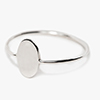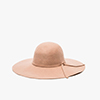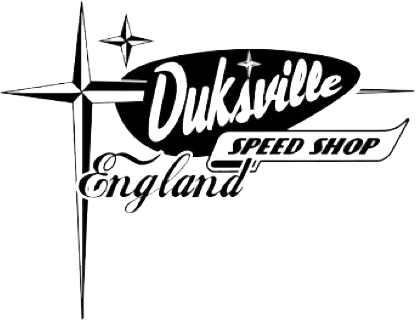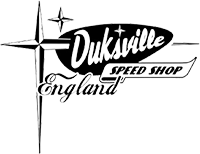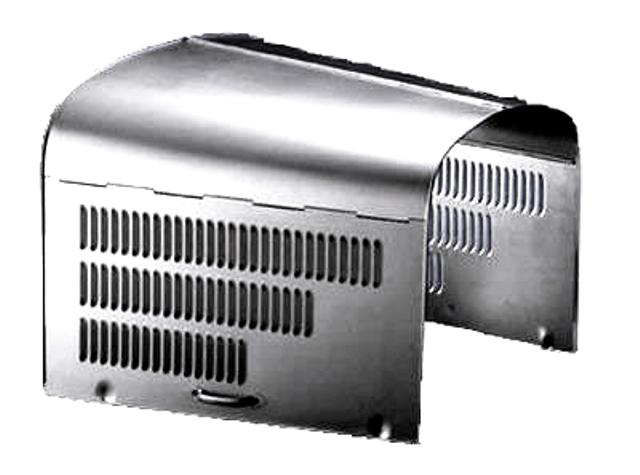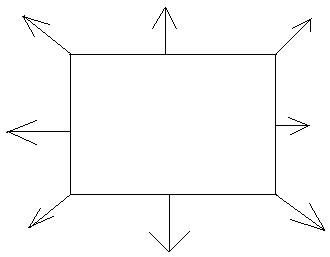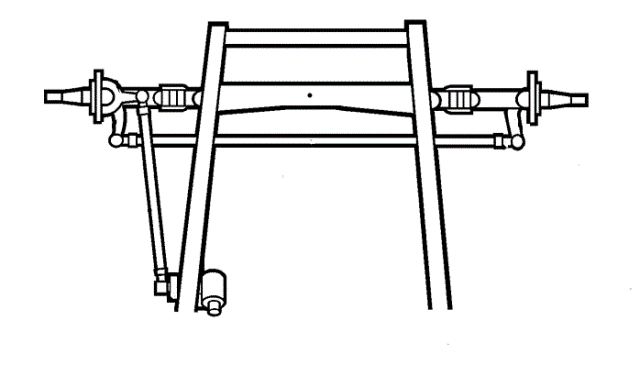
BUMP STEER
Bump steer is when the front wheels move up and down, we want the front wheels to maintain a particular direction. It’s most important for the wheels to have minimal bump when negotiating turns. There are certain elements of the construction of the front end components that will make this happen.
The angles of the upper and lower control arms, meaning a line extending through the center of rotation of the ball joints and inner mounts of each arm, intersect at a point we call the instant center (IC). This is one of the components used to determine the moment center location. In order to have near zero bumpsteer, the intended goal, we need to have the tie rods on each side point toward the IC for its side. This is one of two criteria for near zero B/S.
The other thing we need is for the tie rod to be a specific length. That length must be equal to the distance formed by (1) a line extending through the centres of rotation of the tie-rod ends, and (2) the tie-rod line intersection with (A) lines extending through both the upper and lower ball joints, and (B) the plane that passes through the inner chassis mounts. This can get a little complicated because although the ball joints do form a single line, the chassis mounts form a plane because of the front and rear mounts.
So, the inner tie-rod intersection point is where the tie-rod line intersects the plane of the inner mounts and the outer line intersection point is where it intersects the ball joint line. A three dimensional geometry program can simulate this very well, but most of us don’t have the luxury of owning and knowing how to operate one of those. If so, we must go through the process of physically measuring the B/S in our cars.
What Creates Bumpsteer;
When the tie rod is not aligned with the IC and/or the length is wrong for the system, we have B/S. As the wheel moves vertically, the wheel will either steer left or right. We will refer to the direction from a driver’s perspective only, in this discussion.to
If the tie rod was pointed so the tie-rod line passes below the IC, then the wheel will bump-in (toward the centerline of the car) as the wheel travels up, and bump-out when the wheel travels down. If the tie-rod line passes over the IC, then we will have bump-out as the wheel travels up, and bump-in when the wheel travels down.
If the tie rod were too short, we would have bumpsteer in when the wheel travels in both directions from the static ride height position. If it were too long, then the wheel would bump-out as the wheel traveled in both directions from ride height.
These indicators can tell us if we have either a tie rod alignment problem or a tie rod length problem. In some cases, both may be present and that causes a very erratic motion of the wheel. To determine which, record each inch for several inches of travel in both directions from static ride height and note the tendencies. You might have perfect alignment and a tie rod that is wrong for length. This could be due to a poorly designed drag link or the wrong width rack-and-pinion steering unit.
Design Changes That Affect Bumpsteer;
You could buy a car that was near perfect for B/S and then make design changes that would change our B/S. When racers and manufacturers started to use spindles that were designed for rack-and-pinion systems in a drag link system some years ago, they inadvertently changed the bumpsteer characteristics, along with the Ackermann geometry.
With the drag link system, the outer tie-rod end was closer to the centerline of the car than the lower ball joint, due to the angled (from a top view) steering arms. This design feature cancelled out the natural tendency for the system to toe the wheels out as the car was steered.
When the new, lighter “rack” spindles were installed, with straight ahead steering arms, the length of the tie rods changed necessarily. Now we have created bump-out as the wheel travels up and down. New drag links with the inner tie-rod ends placed farther out were needed so that the tie rod would remain the correct length to eliminate the adverse B/S those spindles created.
If we make changes to the frontend geometry to improve our moment center location, we might change the B/S characteristics at the same time. This is important and we should have warned you about that in past articles on the subject.
For example, when we install extended lower ball joints to take angle out of the lower control arms, we change the angle of the lower arm and move the IC height. The tie rod may not now intersect with the IC and we will have introduced adverse B/S. When making changes to the arm angles, we need to realign the tie rod so that it stays pointed toward the IC.
Antis Affect BumpSteer;
In both dirt and asphalt racing, anti- and pro-dive is used in various degrees. These effects cause changes to our B/S. With antidive, this is because when the wheel travels up, the upper ball joint moves toward the rear of the car and this rotates the spindle counterclockwise from a right-side view. This rotation moves the outer tie-rod end upward and changes the angle of the tie rod. Now, it no longer points toward the IC.
Where we had near zero B/S before with no antidive, we now have B/S when the right front wheel travels up. With pro-dive, we see a similar effect, the tie-rod end moves down with vertical travel and again the tie rod is misaligned with the IC. If you originally checked your B/S and found it acceptable and then experimented with antis, and didn’t recheck your B/S, you could, and probably do, have a problem, not statically, but dynamically in the mid-turn configuration.
Steering Affects BumpSteer;
When we steer our front wheels, we change the angles of our tie rods due to caster, camber, and degree of spindle on both sides. The tie-rod ends travel in an arc that is not parallel to the ground. This changes the outer tie-rod height and therefore the B/S. It’s for this reason that we recommend doing your B/S with the wheels both straight ahead and then again with the wheels turned equal to mid-turn steering at the track you will run.
